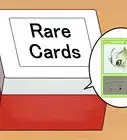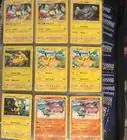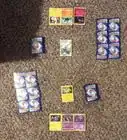This article was co-authored by Madeleine Flamiano. Madeleine Flamiano is a Role-playing Game Enthusiast based in Berkeley, California. She has over 20 years of gaming experience and is an avid gamer in all parts of her life—she's especially fond of tabletop board games and the world of Pokémon. Pokémon Crystal Version is her favorite game in the franchise. Some of her greatest feats were evolving Eevee to a Level 99 Umbreon and collecting every legendary bird Pokémon. Her professional path started at NaNoWriMo, where she scripted a summer-long world-building series and hosted its Virtual Write-Ins. She has written seven books for DDCO Publishing, which specializes in LitRPG and is operated by New York Times Bestseller JA Cipriano. She has ranked in the Top 100 list for Dark Fantasy, Sword & Sorcery, and Fantasy Romance. She was voted by her peers as "The Perfectionist" on Roleplay Adventures, a SERP for forum roleplaying. Madeleine graduated from Mills College with a B.A. in English with a concentration in Literature and a Minor in Philosophy.
wikiHow marks an article as reader-approved once it receives enough positive feedback. This article received 33 testimonials and 82% of readers who voted found it helpful, earning it our reader-approved status.
This article has been viewed 1,978,563 times.
If you like the Pokémon movies, TV show, or playing the video games, you can also play the Pokémon trading card game (or Pokémon TCG). This is a great way to have fun with your friends and experience cool Pokémon battles in real life! Read below to find out how to play the Pokémon TCG.
Steps
Setting Up Your Cards
-
1Shuffle your deck. Your deck should have exactly 60 cards and it should be shuffled well. One-fourth to one-third of the cards in your deck should be energy cards for a well-balanced deck, but whatever suits you is fine.
- If you don't have 60 cards to play with and you're playing casually, ask your opponent if it's OK to play with less than 60 cards in a deck. Make sure you and your opponent have the same amount of cards in your decks!
-
2Determine who goes first. Flip a coin to see who starts. The first player cannot attack on their first turn.Advertisement
-
3Draw 7 cards. Take 7 cards from the top of the deck and put them aside, face down.
-
4Find your Basic Pokémon. Look for a Basic Pokémon in your hand of 7 cards. Basic Pokémon are represented by a box that says "BASIC" at the top of the card. If there aren't any Basics, shuffle your hand into your deck and draw another 7 cards. This is called a mulligan. Each time you perform a mulligan, your opponent has the choice of drawing an extra card.
-
5Pick your active Pokémon. If you have at least one basic Pokémon in your hand, put the one you want to use for attack first face down onto the playing area a few inches in front of you. If you have more basic Pokémon cards in your hand, you can put them face down beneath your active Pokémon as your bench. You may have no more than 5 Pokémon on your bench at one time.
-
6Draw your six prize cards. You can look at your hand, but don't look at your prizes yet! Place these cards in a pile on the side face-down. Each time you knock one of your opponent's Pokémon out, take a prize card. When you run out of prize cards, you win. Fewer prize cards can be used for a faster game.
- There is a special rule for EX and GX Pokémon. If you knock out an EX or GX Pokémon, you get to take two instead of one Prize Card.
- Contrary to popular belief, you do not take or keep your opponent's Prize Cards. Once you knock out a Pokémon, you take Prize Cards from your own pile, and put them into your hand.
-
7Put the remainder of your deck to the side. Typically these should be on your right side, opposite to the prize cards. Your Discard Pile will be below your deck.
-
8Face your cards in the right direction. When you are ready to begin, make sure your active and benched Pokémon cards are all turned face up. The rest of your hand, prizes, and the rest of your deck should all be face down. You can look at your hand, but not your deck or prize cards.
-
9Play until someone wins. You win if you take all your prize cards, if your opponent has to draw but can't because they've run out of cards in their deck, or if you knock out all Pokémon on your opponent's field.
Playing Your Cards
-
1At the beginning of your turn, draw a card.
- Contrary to popular belief, this step is mandatory. You do not have the option to choose whether you want to draw a card.
-
2Bench basic Pokémon. If you have a basic Pokémon in your hand, you can place that Pokémon in your bench. This can be done as many times as you want. There can be up to five Pokémon on your bench, unless a card on the field says otherwise.
-
3Use Energy cards. You can attach one Energy card per turn (unless a card on the field says otherwise) by placing it underneath one of your Pokémon, below all pre-evolved forms.
-
4Use Trainer cards. These cards have descriptions of their effects on the card itself, and let you do lots of helpful things. Different types of Trainer cards are Items, Supporters, Tools, and Stadiums. You can activate any number of Item and Tool cards during your turn, but only one Supporter and Stadium. After they are used, they go to the discard pile. A Pokémon Tool can be attached to one of your Pokémon that doesn't already have a tool attached to it. They stay there with the Pokémon until the Pokémon gets knocked out, at which point they both get discarded. When you play a stadium, it is placed horizontally between both player's fields. It is discarded when a new stadium from your opponent comes into play. There are also special energy cards used to provide energy and do something else special that is said on the card.
-
5Evolve your Pokémon. If you have evolution cards for a Pokémon that is active or on your bench, you can evolve the Pokémon by placing that card on top of it. A Basic evolves into a Stage 1, and a Stage 1 into a Stage 2. You can't evolve a Pokémon on the first turn it is played, either by benching them or evolving them, unless using an effect. You also can't evolve Pokémon on your first turn.
-
6Use an ability. Some Pokémon have abilities which can be used for special effects. These are listed on their cards. Abilities are not attacks, so you may still attack after using one or more abilities. Be sure to announce the abilities to your opponent so they know what you are doing.
-
7Retreat your Pokémon. To retreat a Pokémon is to switch it out for another Pokémon on your bench. Usually, you will have to pay a retreat cost by discarding energy attached to that Pokémon. The retreat cost will be listed on the bottom of the card. You can only retreat once per turn.
-
8Attack your opponent. The last thing you can do in your turn is to attack your opponent's active Pokémon using yours. After you attack, your turn ends. You cannot attack on your first turn if you go first. This action is expanded upon in the following section.
Attacking Your Opponent
-
1Attack. You have to have the right amount and type of Energy needed for the attack cost (listed on the card to the left of the attack name) attached to that Pokémon in order to attack.
- Some attacks require colorless energy. There are indicated by white stars, and can be any type of energy. Other attacks will require specific energy types.
-
2Note your opponent's weakness. Most cards have a Weakness to a particular type. It will receive additional damage if your Pokémon is of the type it has weakness to.
-
3Check the defending Pokémon's resistance. It will receive less damage if your Pokémon is of the type it has resistance to.
-
4Inflict damage. The damage an attack inflicts will be to the right of the attack name. There are also some effects that are listed beneath some attacks that can increase the damage output, so watch out for those! This damage is placed on the defending Pokémon (your opponent's Active Pokémon). In game, damage will be referred to as damage counters, with each one representing 10 damage. You can keep track of these damage counters by using official counters, any sort of small flat objects, or with dice.
-
5Discard knocked out Pokémon. Pokémon with 0 HP (the amount of damage is greater than or equal to the HP of the Pokémon) are knocked out. Place them in their owner's discard pile, along with any Energies or items that may be attached, and any or all evolutions. Then, you can take a Prize card.
Handling Special Conditions
-
1Special conditions are detrimental status effects that can be applied to your active Pokémon. These include Burned, Poisoned, Asleep, Confused, and Paralyzed. Poisoned, Burned, Asleep, and Paralyzed have effects that occur in-between turns, in that order.
-
2Deal with a Poisoned Pokémon. Put a Poison marker on the Pokémon that is poisoned. It takes 1 damage counter between each turn.
-
3Deal with a Burned Pokémon. Place a Burned marker on the Pokémon if it is Burned. Flip a coin in-between turns. If heads, the Pokémon takes no burn damage. If tails, put 2 damage counters on the Burned Pokémon.
- The Sun and Moon rule for Burned is a little different. For the Sun and Moon Burned rule, put a Burned marker on it (the bandage marker), if your Pokémon is Burned. Between turns, put two damage counters on the Burned Pokémon. Then, that Burned Pokémon’s owner flips a coin. If heads, the Pokémon is no longer Burned, and you can remove the Burned marker. If tails, it stays Burned.
-
4Deal with Asleep Pokémon. If a Pokémon is Asleep, its card is turned counterclockwise. Flip a coin in-between turns; if heads, the Pokémon wakes up. If tails, stays asleep. Asleep Pokémon cannot retreat or attack.
-
5Deal with Paralyzed Pokémon. Paralyzed Pokémon are turned clockwise, and can't retreat or attack. Paralysis is cured between turns if the Pokémon was Paralyzed since the beginning of your last turn.
-
6Deal with a Confused Pokémon. The card of a Confused Pokémon is turned upside down. Flip a coin before you attack with a Confused Pokémon; if tails, put three damage counters on that Pokémon and the attack does nothing. If heads, your Pokémon attacks successfully.
- If the attack involves a coin flip, flip for the Confusion first.
-
7Heal your affected Pokémon. The easiest way to heal an affected Pokémon is by returning it to the bench. It cannot be retreated if it is asleep or paralyzed, but can still be switched by using effects. You can also use trainer cards that heal status conditions. If a Pokémon would be affected by multiple conditions that rotate the card, only the most recent one applies.
Community Q&A
-
QuestionWhat is a damage counter?
 Community AnswerA damage counter is a little token that tracks how much damage a Pokemon took. Usually one counter is worth 10 damage.
Community AnswerA damage counter is a little token that tracks how much damage a Pokemon took. Usually one counter is worth 10 damage. -
QuestionIf you attack, do you discard energy?
 WikiHowUser20180619201339Community AnswerYou do not discard any energy unless the attack specifies otherwise.
WikiHowUser20180619201339Community AnswerYou do not discard any energy unless the attack specifies otherwise. -
QuestionWhat else can I use if I don't have a burn counter?
 Community AnswerYou can use anything small that you can place on the card as a reminder, such as a coin or pebble. You can also try to keep track of the condition in your head.
Community AnswerYou can use anything small that you can place on the card as a reminder, such as a coin or pebble. You can also try to keep track of the condition in your head.
Warnings
- Be a good sport when you play. Don’t fight if you lose and always shake hands before and after a match. Remember, you’re supposed to have fun, not get angry or sad.⧼thumbs_response⧽
- If playing matches is too hard or makes you too angry, you can always just collect and trade the cards, without actually playing.⧼thumbs_response⧽
- Don't let losing discourage you from playing. Ask yourself, "Why did I lose?". Find the answer, and modify your deck so that you're less likely to run into the same mistake.⧼thumbs_response⧽
About This Article
To play with Pokémon cards, draw your hand and Prize cards, and set up your active and benched Pokémon. When you’re ready to play, draw a card and determine if you can use it on your playing field based on the description written on the card. When you gather enough energy, use your Pokémon to attack your opponent. If the damage is greater than the Pokémon’s HP, that card must be discarded. You can then take a Prize card. Whoever gathers all of their Prize cards first is the winner. To learn how to deal your Pokémon cards, keep reading!

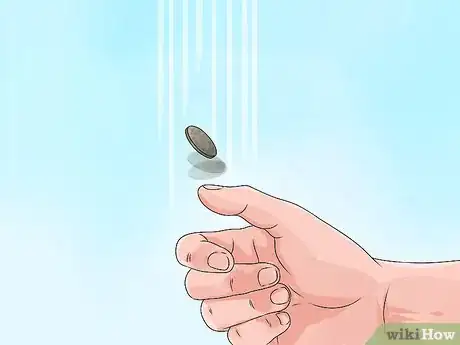
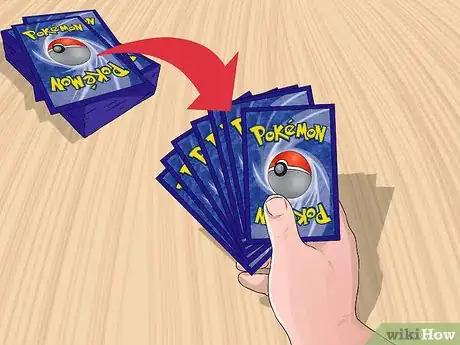
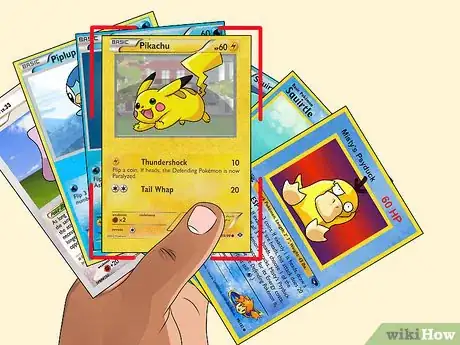
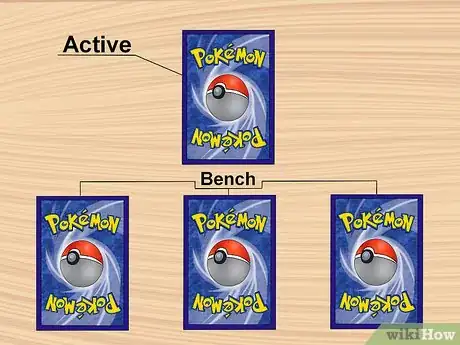
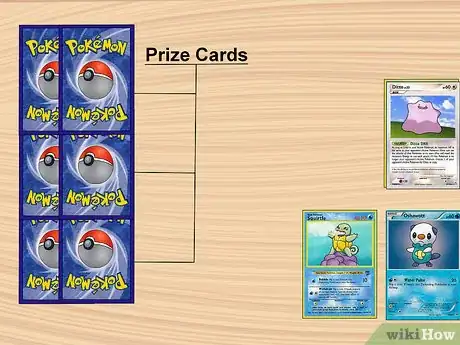
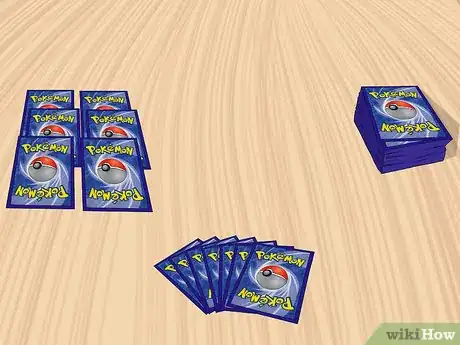
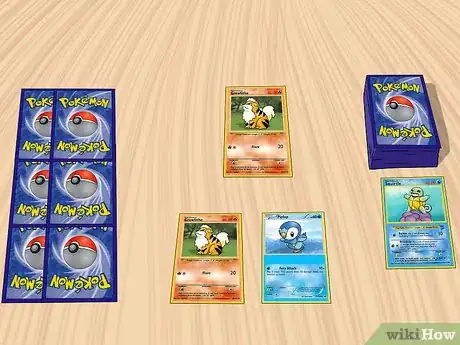
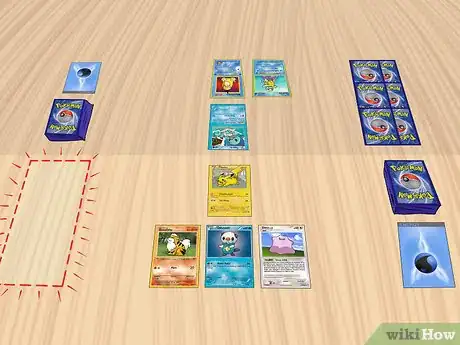
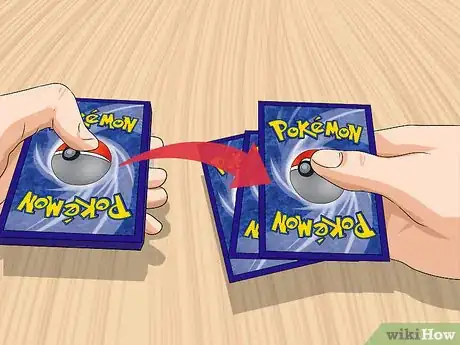
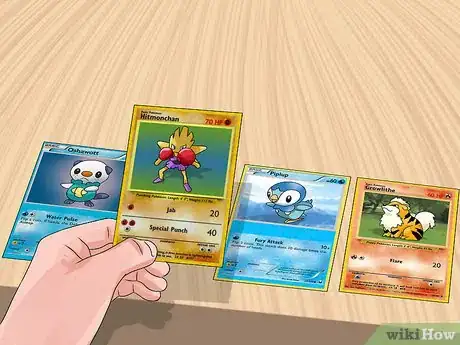
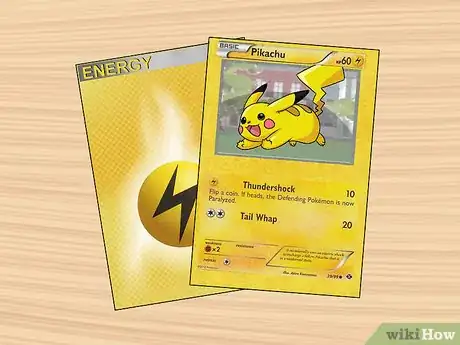
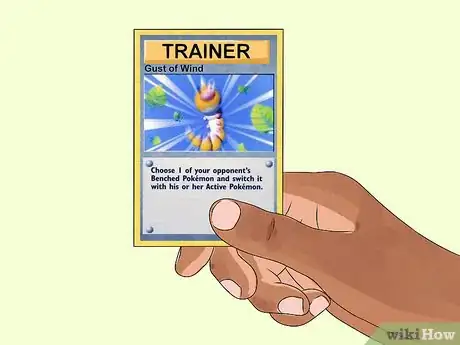
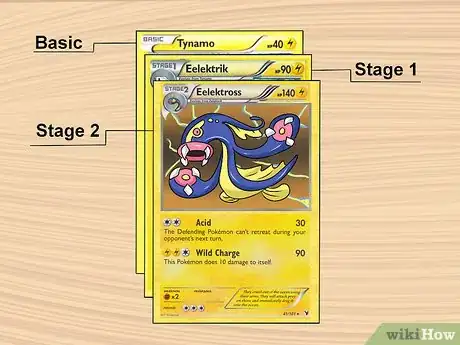
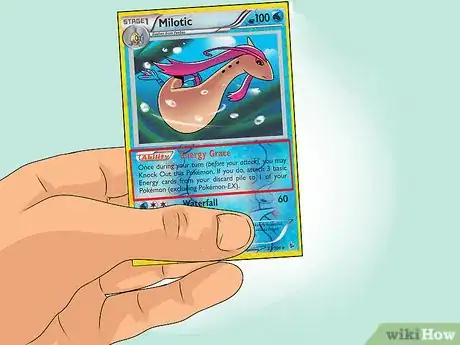
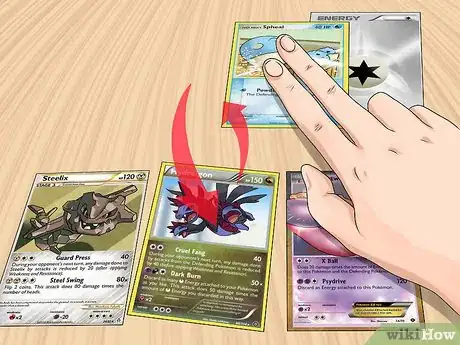

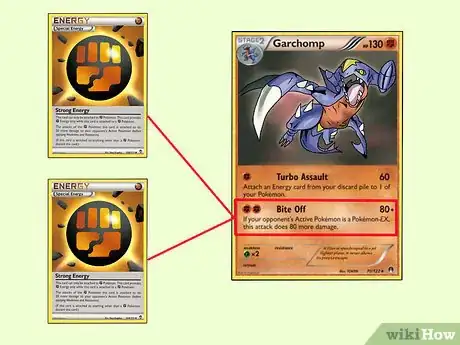
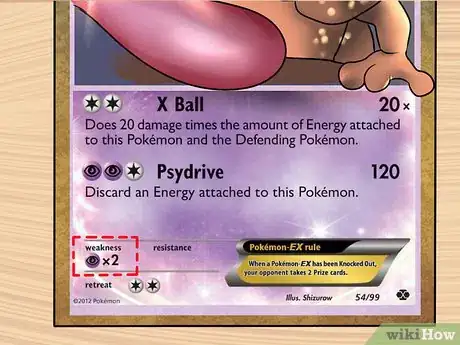

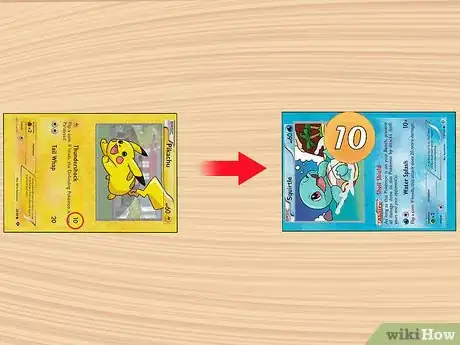
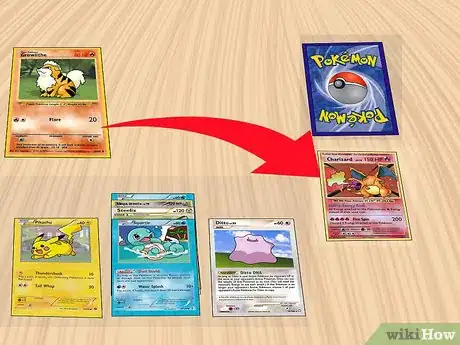
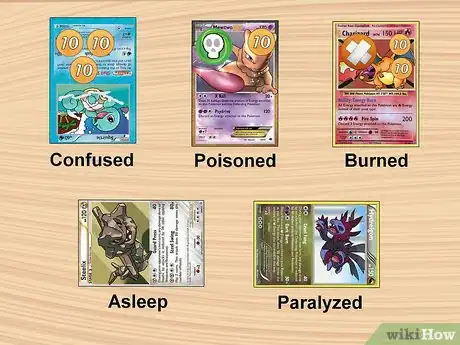

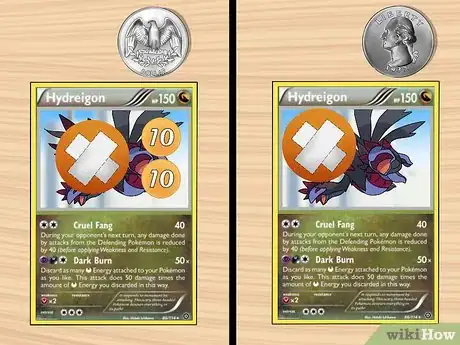

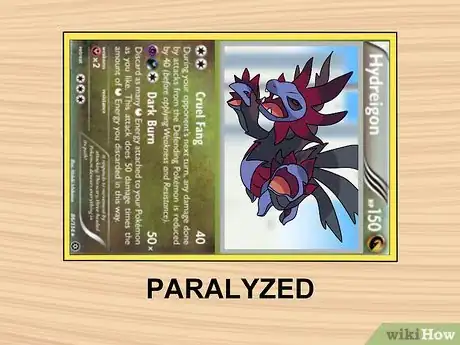
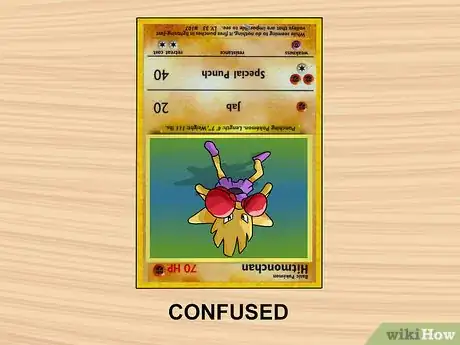
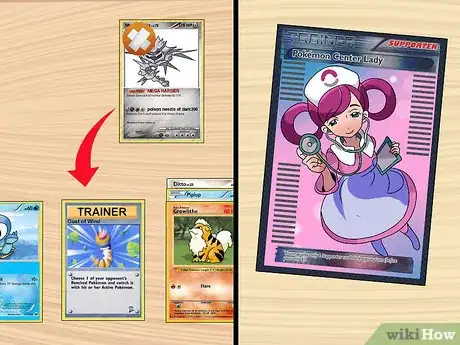
-Step-8.webp)
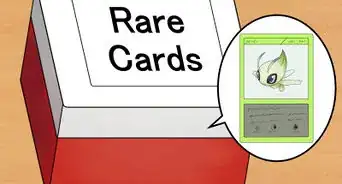
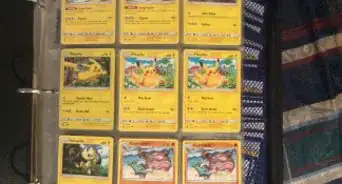
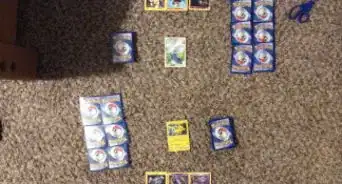

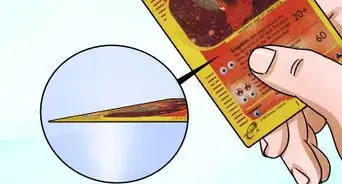

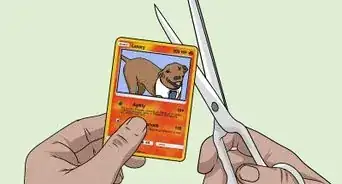

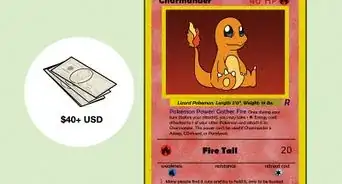
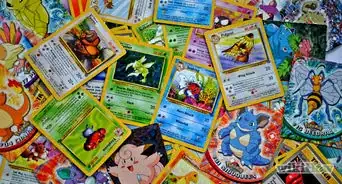
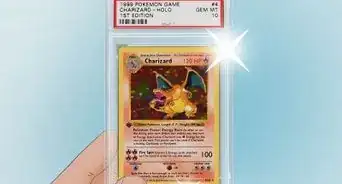

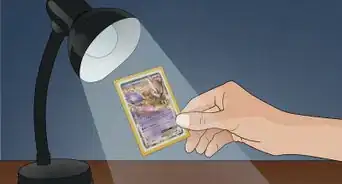










-Step-8.webp)
